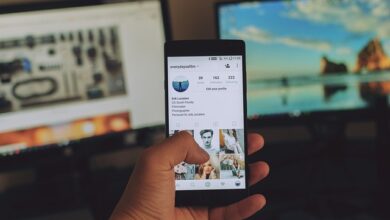
In today’s interconnected world, social media has become an indispensable tool for activism. Its ability to rapidly disseminate information, mobilize support, and shape public opinion has revolutionized the way social movements operate. This article delves into the multifaceted power of social media in activism, exploring how it has transformed traditional methods, its role in recent movements, and the challenges it faces.
The Evolution of Activism in the Digital Age
Traditional Activism: The Pre-Social Media Era
Before the rise of social media, activism was predominantly a grassroots endeavor. Activists relied on physical gatherings, pamphlets, and word of mouth to spread their messages. Campaigns like the Civil Rights Movement in the 1960s, the anti-apartheid struggle in South Africa, and the feminist movements of the 20th century were driven by face-to-face interactions, print media, and traditional broadcast channels.
These methods, while effective, had limitations in terms of reach and speed. Activists could only mobilize support within their immediate communities or through established media channels, which often had their own biases and constraints.
The Rise of Social Media: A Paradigm Shift
The advent of social media in the early 21st century marked a significant shift in the landscape of activism. Platforms like Facebook, Twitter, Instagram, and YouTube have democratized information dissemination and provided activists with unprecedented tools for engagement.
Social media allows for real-time communication, broadens the audience, and enables the rapid spread of information across the globe. It has become a virtual public square where activists can rally support, share stories, and highlight issues that may otherwise go unnoticed by mainstream media.
How Social Media Empowers Activism
Amplifying Voices and Increasing Visibility
One of the most profound impacts of social media on activism is its ability to amplify voices that were previously marginalized. Activists can use platforms to share their stories and experiences, reaching audiences beyond their local communities. This has been especially crucial for marginalized groups, such as racial minorities, LGBTQ+ individuals, and women, who often struggle to have their issues represented in mainstream media.
For instance, the #BlackLivesMatter movement, which began as a hashtag on Twitter, has grown into a global movement advocating for racial justice. The hashtag not only brought attention to police violence and systemic racism but also provided a platform for individuals to share their experiences and organize protests.
Mobilizing Support and Organizing Protests
Social media excels in mobilizing support and organizing events. The ability to create and share events with a few clicks has transformed the logistics of organizing protests and rallies. Activists can quickly disseminate information about events, coordinate with others, and gauge public interest.
The Arab Spring, which began in Tunisia in 2010 and spread across the Middle East and North Africa, is a prime example of social media’s role in activism. Platforms like Facebook and Twitter were instrumental in organizing protests, sharing real-time updates, and garnering international support. The speed and scale of mobilization during the Arab Spring showcased the power of social media in facilitating grassroots movements.
Engaging with a Global Audience
Social media transcends geographical boundaries, allowing activists to engage with a global audience. This global reach can generate international pressure on governments and organizations to address issues that may not be receiving attention in local media.
The #MeToo movement, which highlighted the prevalence of sexual harassment and assault, gained international traction through social media. The movement encouraged individuals from various countries to share their stories and demand change, demonstrating how social media can unite people around a common cause regardless of location.
Challenges and Limitations of Social Media in Activism
Misinformation and Manipulation
While social media has many benefits, it is not without its challenges. One significant issue is the spread of misinformation. False information can spread as rapidly as accurate information, potentially undermining the credibility of movements and causing confusion among supporters.
For example, during the COVID-19 pandemic, misinformation about the virus and vaccines proliferated on social media, leading to public health concerns and hindering efforts to control the spread of the virus. Activists must navigate this landscape carefully, ensuring that their messages are accurate and evidence-based.
Digital Divide and Accessibility
Another challenge is the digital divide. While social media is a powerful tool, it is not universally accessible. Individuals in regions with limited internet access or technological infrastructure may be excluded from online activism. This can create disparities in representation and limit the reach of social movements.
Activists must be mindful of these limitations and consider alternative strategies to ensure inclusivity. This may involve using traditional media channels, community-based outreach, and other methods to engage those who may not have access to social media.
Online Harassment and Safety Concerns
Activists often face online harassment and threats, which can have serious consequences for their safety and well-being. Social media platforms can be breeding grounds for abuse, doxing, and trolling, making it challenging for activists to maintain their focus on advocacy.
To address these issues, activists and organizations need to develop strategies for protecting themselves and their supporters. This may include using privacy settings, reporting abuse, and seeking support from organizations that specialize in online safety.
The Future of Social Media in Activism
Innovations and Trends
As technology continues to evolve, so too will the ways in which social media is used in activism. Emerging technologies like augmented reality (AR), virtual reality (VR), and blockchain have the potential to transform activism by creating immersive experiences, enhancing transparency, and enabling secure transactions.
For example, VR could be used to simulate protest experiences or educational programs, providing a more immersive understanding of issues. Blockchain technology could offer decentralized platforms for organizing and funding activism, reducing reliance on traditional financial systems.
Balancing Digital and Physical Activism
While social media is a powerful tool, it is essential for activists to balance digital engagement with physical actions. Social media should complement, not replace, on-the-ground efforts. Effective activism often involves a combination of online advocacy, grassroots organizing, and direct action.
Activists should strive to use social media strategically, leveraging its strengths while addressing its limitations. This includes fostering meaningful offline connections, engaging with communities directly, and ensuring that digital efforts translate into tangible change.



